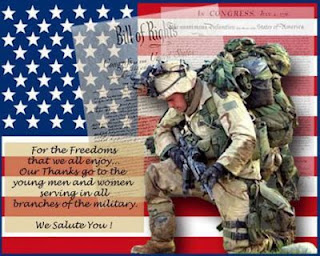Medal of Honor recipient's valor hidden for decades
September 18, 2010 10:49 p.m. EDT
But for decades even Etchberger's own children didn't know about his heroism.
Cory Etchberger was in third grade in 1968, when he was told that his father had died in a helicopter accident in Southeast Asia. At age 29 he learned the truth, when the U.S. Air Force declassified his father's story.
"I was stunned," he told CNN during a visit to his hometown of Hamburg, Pennsylvania.
During the Vietnam War, U.S. troops weren't supposed to be in neutral Laos, so Richard Etchberger and a handful of colleagues shed their uniforms and posed as civilians to run a top-secret radar installation high on a Laotian cliff. Called Lima Site 85, it guided U.S. bombers to sites in North Vietnam and parts of Laos under communist control.
The North Vietnamese wanted to eliminate the installation, and early on the morning of March 11, 1968, its soldiers succeeded in scaling the 3,000-foot precipice and launching an attack.
Timothy Castle, of the CIA's Center for the Study of Intelligence, wrote the book "One Day Too Long: Top Secret Site 85 and the Bombing of North Vietnam." He calls Etchberger "a hero."
Castle said Etchberger, a technician, picked up an M16 rifle, which he barely knew how to use, and ferociously protected his colleagues. One of them was Stanley Sliz. "I got hit in both legs," Sliz remembered, "and everybody was screaming and hollering, but they weren't able to get close because of Etch firing at them."
John Daniel still has scars from the shrapnel wounds he got that day. "He was the only one that didn't get injured in the firefight," he recalled. "They kept throwing grenades and shooting, and we kept picking up hand grenades and throwing them, or kicking them to the other side of the mountain."
When a helicopter flown by CIA-affiliated Air America arrived to evacuate them, Etchberger braved enemy fire to load three wounded comrades, including Daniel and Sliz, onto hoists.
"Thank God for Dick Etchberger. If it wasn't for him, I would not be alive today," Daniel told CNN.
Etchberger made it onto the chopper unwounded. But as it began to pull away, enemy shots rang out.
Sliz said he saw a splotch of red, and realized the man who had saved his life had lost his own. One round had hit Etchberger and killed him.
"I live it every day," said Sliz. "I live it every day. It haunts me."
Shortly after Etchberger's death, he was secretly awarded the Air Force Cross for bravery. He was recommended for the Medal of Honor, but then-President Lyndon Johnson rejected the idea, fearing it would expose the U.S. military's activities in Laos.
In his hometown of Hamburg, American flags fly from the light poles and men congregate on the steps of the Veterans of Foreign Wars. Since Etchberger's story became public, a memorial has been erected commemorating his heroism, and his name is proudly displayed on the town's sign. But now there is an addition: a hand-drawn banner reading "Medal of Honor winner."
Though the battle of Lima Site 85 took place more than four decades ago, Castle believes it is important to recognize the heroism of the men who were there.
"We have these extraordinary folks in the U.S. military who are willing to accept these types of missions and to go to these very remote places in very dangerous conditions," he said. "The men that went to Site 85 had every reason to believe that no one in the public would ever know anything about what they were doing or what they had done, but they went anyway."
Etchberger's three sons will be at the White House Medal of Honor ceremony Tuesday. So will John Daniel, whose life he saved. "There might be some tears there. Carpet in that White House may be wet. But we'll make it," said Daniel.
But Castle noted that the full story of Lima Site 85 still isn't known. Ten technicians who were on the Laotian mountaintop with Etchberger, Daniel, and Sliz that March morning in 1968 have never been accounted for.
CNN's Jim Spellman, Sara Weisfeldt and Floyd Yarmuth contributed to this report.
























